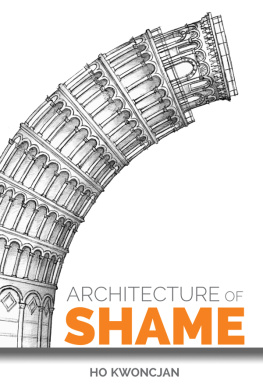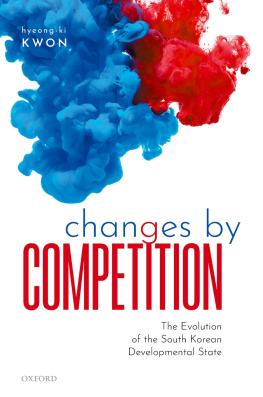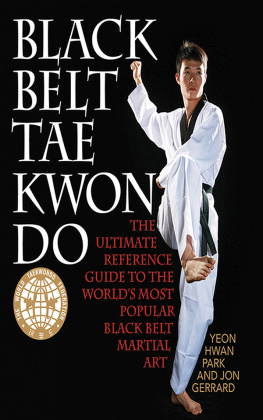

Copyright 1989, 1999, 2009, 2013 by Yeon Hee Park, Yeon Hwan Park, and John Smallwood
All Rights Reserved. No part of this book may be reproduced in any manner without the express written consent of the publisher, except in the case of brief excerpts in critical reviews or articles. All inquiries should be addressed to Skyhorse Publishing, 307 West 36th Street, 11th Floor, New York, NY 10018.
Skyhorse Publishing books may be purchased in bulk at special discounts for sales promotion, corporate gifts, fund-raising, or educational purposes. Special editions can also be created to specifications. For details, contact the Special Sales Department, Skyhorse Publishing, 307 West 36th Street, 11th Floor, New York, NY 10018 or info@skyhorsepublishing.com.
Skyhorse and Skyhorse Publishing are registered trademarks of Skyhorse Publishing, Inc., a Delaware corporation.
Visit our website at www.skyhorsepublishing.com.
10 9 8 7 6 5 4 3 2 1
eISBN: 978-1-62873-845-2
Library of Congress Cataloging-in-Publication Data is available on file.
ISBN: 978-1-62636-425-7
Printed in China
C ONTENTS
P REFACE
W e have often been asked to define what Tae Kwon Do is, to encapsulate in a few words that which for many is a vague and elusive concept. When answering such a question, the first thing we try to impress upon the person is that Tae Kwon Do is not just self-defense training or punching and kicking. The art is far more than simple physical conditioning, mental training, and philosophical study. It has to do with the development of the Tae Kwon Do spirit, which carries over into all aspects of a students life. And when we refer to students of the art, we include all teachers of the art as well, for we too are always growing and learning through Tae Kwon Do. This concept of the spirit of Tae Kwon Do is where the elusive answer to our question is found, for this is in essence the definition of Tae Kwon Do.
In English, the literal translation of Tae Kwon Do is the art of kicking punching. Tae means to kick, Kwon means to punch and Do means art. But this is only a superficial translation. Do in Korean implies a philosophical viewpoint or way of approaching lifea means by which enlightenment is achieved. This is the ultimate aim of Tae Kwon Do. Through rigorous physical training, students of the art seek to improve themselves, physically, mentally, and spiritually. On the pages of this book you will see only the physical techniques explained and demonstrated. Yet this is simply the veneer of our art, the only part of our art that can be captured and demonstrated by words and pictures. That which is truly the essence of Tae Kwon Do cannot be seen, touched, smelled, tasted, or heard. It can only be experienced.
You may have noticed that we still have not yet answered the question of what Tae Kwon Do is. Our answer is to invite the questioner to experience Tae Kwon Do by studying with us. This third edition of Tae Kwon Do, now in full color with more than 740 new photographs and with updated appendixes covering rules of competition, referee signals, and weight and belt divisions, offers a unique opportunity to do so. We now extend that same invitation to you. Come, study and experience with us.
Master Yeon Hee Park
Master Yeon Hwan Park
Jon Gerrard
A CKNOWLEDGMENTS
W e would like to thank the following people for sacrificing their own time to help us with this book:
Master Edward Park
Master Chunkil Chae
Master Sooyong Jeon
Master Hyung Joon
And special thanks to Mr. Beob Chul Lee, who took all of the photographs that appear in this edition!

From left to right: Master Chunkil Chae, Master Edward Park, Jon Gerrard, Grandmaster Yeon Hee Park, Grandmaster Yeon Hwan Park, Master Hyung Joon, Master Sooyong Jeon.

I NTRODUCTION
T HE H ISTORY OF AN A RT
A s it is literally translated from the Korean, Tae means to kick or to strike with the foot, Kwon means fist or to strike with the hand, and Do means discipline or art. Taken together, Tae Kwon Do means the art of kicking and punchingthe art of unarmed combat. Modern-day Tae Kwon Do, as it has come to be developed over the years, is a unique martial art incorporating both the quick, straight-line movements that characterize the various Japanese systems and the flowing circular movements of most Chinese styles. But more than this, what truly distinguishes Tae Kwon Do are its varied and uniquely powerful kicking techniques. It is this prominent use of leg and kicking techniques that sets Tae Kwon Do apart from all other martial arts systems. Yet, Tae Kwon Do is far more than simply a system concerned with physical prowess, for it is also an art directed toward the moral development of its students.
The earliest records of Tae Kwon Do practice date back to about 50 B . C . During this time, Korea was divided into three kingdoms: Silla, which was founded on the Kyongju plain in 57 B . C .; Koguryo, founded in the Yalu River Valley in 37 B . C .; and Baekche, founded in the southwestern area of the Korean peninsula in 18 B . C . Evidence of the practice of Taek Kyon (the earliest known form of Tae Kwon Do) has been found in paintings on the ceiling of the Muyong-chong, a royal tomb from the Koguryo dynasty. These and other mural paintings show unarmed combatants using techniques that are virtually identical to those of modern day Tae Kwon Do. Of particular interest are details that show the use of the knife hand, fist, and classical fighting stances, all components of modern Tae Kwon Do.
Although Tae Kwon Do first appeared in the Koguryo kingdom, it is Sillas warrior nobility, the Hwarang, who are credited with the growth and spread of the art throughout Korea. Of the three kingdoms, Silla was the first to be formed, but it remained the smallest and least civilized. Its coastline was constantly under attack by Japanese pirates. After Silla appealed for help against the continual harassment by the Japanese pirates, King Gwanggaeto, the nineteenth in the line of Koguryo monarchs, sent a force of fifty thousand soldiers into neighboring Silla to help the smaller kingdom drive out the pirates. It is at this time that Taek Kyon is thought to have been introduced to Sillas warrior class, handed down in strict secrecy to a few select Sillan warriors by early masters of the art.
These Taek Kyon-trained warriors became known as the Hwarang. Founded initially as a military academy for the young nobility of Silla, the society of the Hwarang-do (the way of flowering manhood) adopted Taek Kyon as a part of its basic training regimen. The society was an elite group, consisting of the Hwarang, or leaders, who were selected from among the sons of royalty between the ages of sixteen and twenty, and the Nangdo, or cadets, who were assembled from the rest of the young nobility and who totaled between two hundred and one thousand at any given time. The young men within the society were educated in many disciplines, including history, Confucian philosophy, ethics, Buddhist morality, riding, archery, sword play, military tactics, and, of course, Taek Kyon. The guiding principles of the Hwarang-do education were based on the Five Codes of Human Conduct, as established by the Buddhist scholar Wonkang. These axioms are:
Next page
















